As part of an event marking the contributions to the study of religion made by (the now late) Wilfred Cantwell Smith, held at the University of Toronto in the Spring of 1992, Jonathan Z. Smith presented a paper entitled “Scriptures and Histories.” Soon published in a special issue of Method & Theory in the Study of Religion (and recently included as chapter 3 of Smith’s On Teaching Religion), it deftly picks up on themes in the former Smith’s work but expands on them considerably since, as the latter Smith writes near the opening of his essay: “We share last names, but not much else.” Continue reading “Writing a History of Origins”
Kids Drink Pop, So What?
 I think it’s worth pausing for a moment to ask why the above photo (originally found here), recently used as the cover image on the Culture on the Edge facebook page, “works.” Given the theoretical goals of this research group (more on that under Identity), why this image of a young Tibetan Buddhist monk (or at least someone dressed up like one, of course) drinking so casually from a pop bottle. What do we assume it “says” and about whom? Continue reading “Kids Drink Pop, So What?”
I think it’s worth pausing for a moment to ask why the above photo (originally found here), recently used as the cover image on the Culture on the Edge facebook page, “works.” Given the theoretical goals of this research group (more on that under Identity), why this image of a young Tibetan Buddhist monk (or at least someone dressed up like one, of course) drinking so casually from a pop bottle. What do we assume it “says” and about whom? Continue reading “Kids Drink Pop, So What?”
The Other Shoe Drops
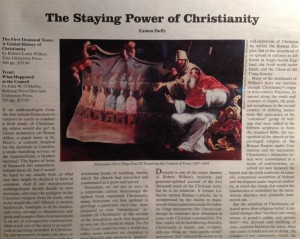 In the same issue of The New York Review of Books that I cited elsewhere (the June 20, 2013 issue), there appears a review essay on two new books on the history of Christianity. Written by the Cambridge University historian, Eamon Duffy, and entitled “The Staying Power of Christianity,” it tackles Robert Wilken’s The First Thousand Years: A Global History of Christianity and John O’ Malley’s Trent: What Happened at the Council. For those interested in bringing more nuanced social theory to the study of religion, Duffy’s opening lines promise much: “If an anthropologist from the star system Sirius were to teleport to earth to conduct a field study of Christianity, where would she go?” What follows is a quick list of several different sites–e.g., a Greek monastery on Mount Athos, a papal mass in St. Peters, a Pentecostal snake-handling service, a Quaker meeting house, etc.–that makes plain that the notion of a homogenous thing called Christianity is hardly a given for many current scholars. “History is written backwards, hindsight is of its essence,” Duffy writes in concluding his introductory paragraph, “and every attempt to characterize any great and complex historical movement is an act of retrospective construction: what is left out of the story is just as significant as anything included.” Continue reading “The Other Shoe Drops”
In the same issue of The New York Review of Books that I cited elsewhere (the June 20, 2013 issue), there appears a review essay on two new books on the history of Christianity. Written by the Cambridge University historian, Eamon Duffy, and entitled “The Staying Power of Christianity,” it tackles Robert Wilken’s The First Thousand Years: A Global History of Christianity and John O’ Malley’s Trent: What Happened at the Council. For those interested in bringing more nuanced social theory to the study of religion, Duffy’s opening lines promise much: “If an anthropologist from the star system Sirius were to teleport to earth to conduct a field study of Christianity, where would she go?” What follows is a quick list of several different sites–e.g., a Greek monastery on Mount Athos, a papal mass in St. Peters, a Pentecostal snake-handling service, a Quaker meeting house, etc.–that makes plain that the notion of a homogenous thing called Christianity is hardly a given for many current scholars. “History is written backwards, hindsight is of its essence,” Duffy writes in concluding his introductory paragraph, “and every attempt to characterize any great and complex historical movement is an act of retrospective construction: what is left out of the story is just as significant as anything included.” Continue reading “The Other Shoe Drops”
What is a Andy Warhol?
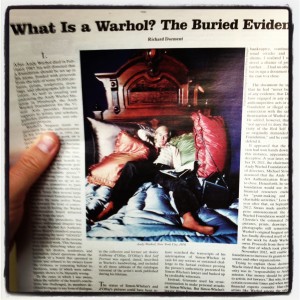 Those interested in how discourses on authenticity work to–as this article states it–stabilize an economy (of any form of signification, be it meaning or money) should consider the current issue (June 20, 2013, vol. 60/11) of The New York Review of Books and its article “What is a Andy Warhol”–an analysis of the goings on of the now defunct, but once powerful and always controversial, Andy Warhol Authentication Board.
Those interested in how discourses on authenticity work to–as this article states it–stabilize an economy (of any form of signification, be it meaning or money) should consider the current issue (June 20, 2013, vol. 60/11) of The New York Review of Books and its article “What is a Andy Warhol”–an analysis of the goings on of the now defunct, but once powerful and always controversial, Andy Warhol Authentication Board.
Biblical Literates
 That was the headline of a Huffington Post article yesterday, referring to an op-ed piece in the Des Moines Register, co-authored by three Iowa scholars of religion, all with specialties in biblical studies. The newspaper article they wrote opened by stating:
That was the headline of a Huffington Post article yesterday, referring to an op-ed piece in the Des Moines Register, co-authored by three Iowa scholars of religion, all with specialties in biblical studies. The newspaper article they wrote opened by stating:
Race and Displacement
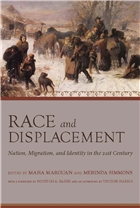 Merinda Simmons’s co-edited book, based on a 2009 conference held on the campus of the University of Alabama (of which she was an organizer) that was devoted to the roles of race in such things as displacement, forced migrations, nation and nationhood, and the way continuous movements of people challenge fixed racial definitions, is soon to be published by the University of Alabama Press.
Merinda Simmons’s co-edited book, based on a 2009 conference held on the campus of the University of Alabama (of which she was an organizer) that was devoted to the roles of race in such things as displacement, forced migrations, nation and nationhood, and the way continuous movements of people challenge fixed racial definitions, is soon to be published by the University of Alabama Press.
The Complexities of Justice
Midway through the Sprin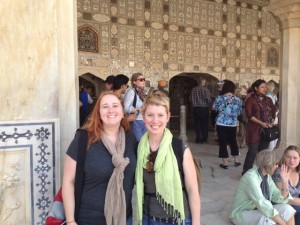 g semester of 2013, Leslie Dorrough Smith (on the right of the photo) accompanied a group of undergraduate students from Avila University to a variety of cities in India, including Delhi, Agra, and Jaipur. The study abroad course in which the students were enrolled focused on issues of social justice. Read a post by Leslie here, discussing how, when some people (e.g., North Americans) travel to such locales, they report witnessing exploitation all around (such as the women Leslie reports who would let tourists hold their children for a picture–but for a fee). “We only see it as exploitation,” Leslie concludes, “because we have the luxury of doing so, to put it simply.”
g semester of 2013, Leslie Dorrough Smith (on the right of the photo) accompanied a group of undergraduate students from Avila University to a variety of cities in India, including Delhi, Agra, and Jaipur. The study abroad course in which the students were enrolled focused on issues of social justice. Read a post by Leslie here, discussing how, when some people (e.g., North Americans) travel to such locales, they report witnessing exploitation all around (such as the women Leslie reports who would let tourists hold their children for a picture–but for a fee). “We only see it as exploitation,” Leslie concludes, “because we have the luxury of doing so, to put it simply.”
Holey Frescoes
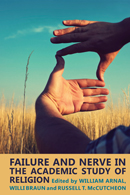 Vaia Touna recently published a chapter in Failure and Nerve in the Academic Study of Religion, entitled “Redescribing Iconoclasm: Holey Frescoes and Identity Formation.” The chapter focuses on a small Greek Orthodox church in the upper old city of Thessaloniki,Greece, and the differing local ways in which its damaged interior icons are made meaningful and understood by both its members and the scholars who have restored them.
Vaia Touna recently published a chapter in Failure and Nerve in the Academic Study of Religion, entitled “Redescribing Iconoclasm: Holey Frescoes and Identity Formation.” The chapter focuses on a small Greek Orthodox church in the upper old city of Thessaloniki,Greece, and the differing local ways in which its damaged interior icons are made meaningful and understood by both its members and the scholars who have restored them.
Religious Experience
 Craig Martin and Russell McCutcheon recently co-edited an anthology on religious experience for Acumen Publishing of the UK–or better put, a collection of critical readings that takes the discourse on religious experience as its object of study, inasmuch as all scholars have to study are claims of experience, regardless the sort. And Leslie Dorrough Smith contributed the critical introductions to each reading.
Craig Martin and Russell McCutcheon recently co-edited an anthology on religious experience for Acumen Publishing of the UK–or better put, a collection of critical readings that takes the discourse on religious experience as its object of study, inasmuch as all scholars have to study are claims of experience, regardless the sort. And Leslie Dorrough Smith contributed the critical introductions to each reading.
Changing the Subject
Merinda Simmons‘s first monograph, Changing the Subject: Writing Women across the African Diaspora, has just been contracted by Ohio State University Press. A critique of the scholarly emphasis on authenticity in literary and postcolonial theory, it offers a counterpoint with readings of several African diasporic texts that demonstrate the contingent and contextual frameworks within which categories like “identity” and “voice” are thought to emerge, demonstrating that, instead of being stable, subjects and subjectivities change as they move from place to place.

